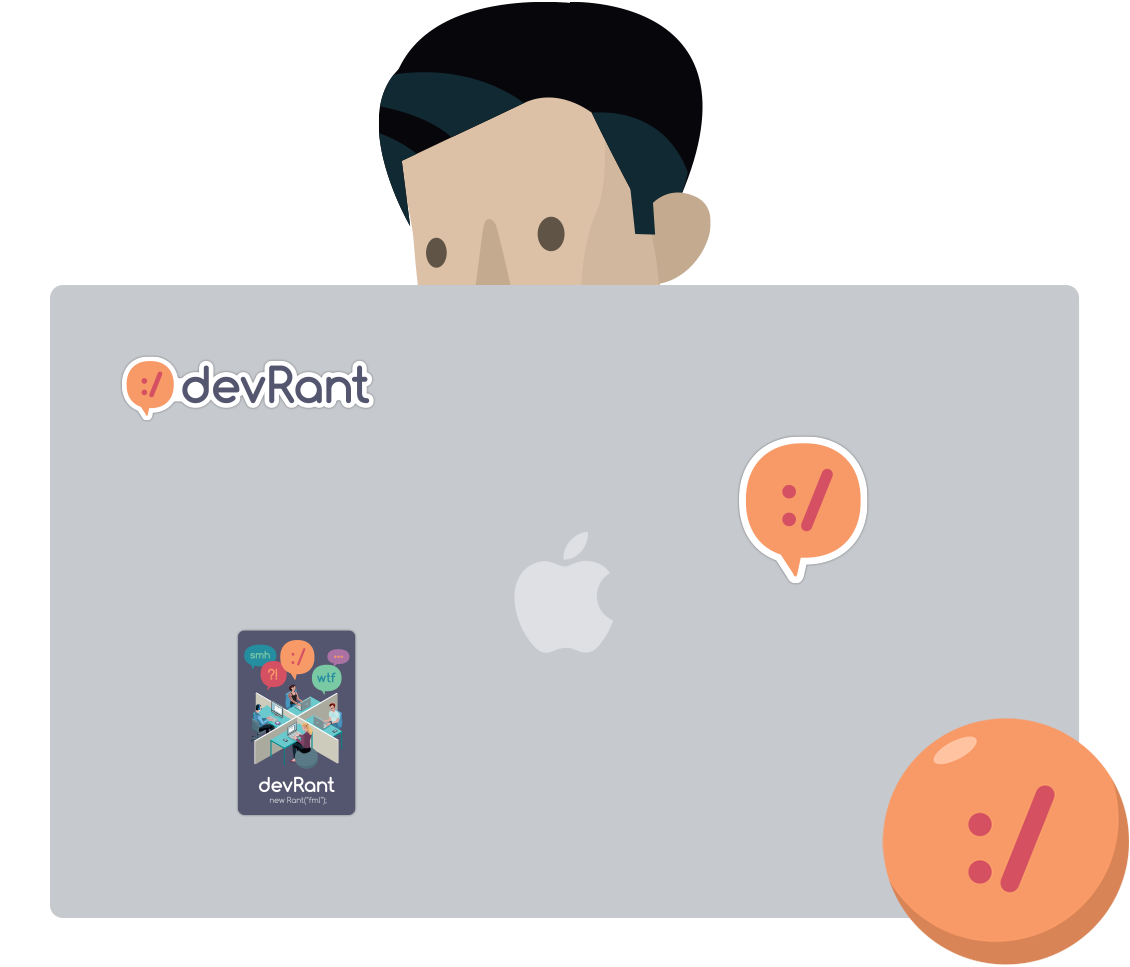Join devRant
Do all the things like
++ or -- rants, post your own rants, comment on others' rants and build your customized dev avatar
Sign Up
Pipeless API

From the creators of devRant, Pipeless lets you power real-time personalized recommendations and activity feeds using a simple API
Learn More
Search - "turing machine"
-
reverse turing test in which you have to convince machine that you are a human... oh wait we already have captcha2
-
"Enigma machine kep private the communications done by Nazi. It was a really difficult code to break because it changed each day. There was a man in England, Alan Turing, who broke it. He's nowadays known as one of the fathers of the Computer Science. I will show in the next lessons how you can simulate Enigma coder just with an easy C program of 60-70 lines. In the WW2 this was considered a military-level safe code. Thanks to mathematicians, computer scientist and analyst and thanks to their work in the last 60 year, you have access to a systems of several orders of magnitude more efficient and secure when you buy a videogame online."
That really fucking inspired me.8 -
Just watched The imitation game, the movie about Alan Turing. Really doesn’t help me to keep faith in humanity when you see that the guy who helped win WWII, saved about 14 million lifes AND is at the origin of all computers has been pushed to suicide because he was gay.
On those sad words, if you’ll excuse me, I now have to code an enigma machine, a Turing machine and then try to code something to break the enigma.7 -
I’m not scared of a machine that passes the turing test, I’m scared of the one that intentionally fail it
-
!rant
Just watching Google io and I swear the new Google Assistant just passed the Turing test?
The assistant called and made a haircut booking over the phone with a human and it seemed so human like!
Turing test is to determine between a machine and human right?4 -
After watching The Imitation Game and understanding the Turing machine, I've got so much respect for every single thing a computer can do! 🙂3
-
Back from the dead with more vaguely-obscure technical bullshit
Working on a chatbot for my BS-CS. Almost done with college, so the assignment is to make a bot that recommends you a CS career. Cool.
I get through making a joint personality and skill-interest quiz that gives you number grades on different spectra. So far, so good. But this project has to be done entirely in pandorabots' online editor. So no scripting. Zero scripting. 100% markup language. That means to even do math, you need to copy a standard library off GitHub.
I mean, that's fine and all, but the syntax is just atrocious, because everything in AIML is input->response. If you ask the bot "what is 5+5?" you must have it go:
- recognize pattern WHAT IS * + *
-> redirect -> XADD * XS *
-> do math -> recurse result
-> 10
uncomfy. Plus, variables can only be accessed through <get> and <set> tags. But mangeable.
So here's where the story becomes a rant.
In the standard docs, there's all these math functions, and they work. There's also logic.
And then there's this fucker
XIF [ * ] XS [ * ]
Which has no documentation and just doesn't work. No idea what the brackets mean. Tried putting in TRUE, tried putting in true math statements (5 XEQ 5), tried putting in recursion tags to trick it, tried everything. It just ignores it.
There is not a single comment, stackOverflow post, or youtube video that even acknowledges the existence of this thing.
So unless I want to convert the entire logic of my program into nested SWITCH statements with the <condition> tag, I'm just fucked.
The icing on the cake is, I go to tech support on Pandorabots to ask for help with this. What do they have except a chatbot to cheerfully tell me that no humans are around to help me right now?
gonna have to build an entire fuckin turing machine in markup tags to calculate whether x = 3
(:1 -
I haven't laughed like that for a long time :D
PowerPoint Turing Machine:
https://youtu.be/uNjxe8ShM-8 -
Respect to all women in CS. They are in fact better when it comes to clean code and concept.
Prof. Kamala Krithivasan, is teaching some hardest shit in CS.
Turning Machine;
https://youtube.com/watch/...3 -
That feeling when you sit down and finish a final project for a class in one night 😎
☑️ Turing Machine Interpreter2 -
Lol just realized I share my birthday with Alan Turing...
Brb after I've figured out how to react to this piece of info coz rn I'm breaking my head over Turing machine for my TOC exam. -
Have my THEORY OF COMPUTATION exam tomorrow 😭
Shit load of YouTube videos left to cover. Turing machine, Chomsky-Normal form, Code generation... I'm so ded. Fuck my soul :/3 -
Stop giving us assignments that are meant to remake old stuff (like "construct a Turing Machine Simulator" or "Make a compiler").3
-
worked on a turing machine that is simulated in Java. was quite fun to do wish I had some more better Projects in my file.
-
Back then as teenager meddling around with QBasic I intuitively realized that you could instruct this machine to do whatever I want - now I could stick the Turing-Church-Hypothesis label to that notion, but I think the experience and feeling of that potential power of programming goes without abstract algebra.
The problem of course: What to do with it? First thing we programmed was a digital telephone book. A chess program? - That's still the thing with apps nowadays I suppose. What should it do? Steer a nuclear power plant or recognize cats on pictures?
(As I didn't know what to do with it back then, I turned to physics and mathematics only to get a job all the university stuff was pointless for but required the skills I taught myself as a 17 year old.) -
The Turing Test, a concept introduced by Alan Turing in 1950, has been a foundation concept for evaluating a machine's ability to exhibit human-like intelligence. But as we edge closer to the singularity—the point where artificial intelligence surpasses human intelligence—a new, perhaps unsettling question comes to the fore: Are we humans ready for the Turing Test's inverse? Unlike Turing's original proposition where machines strive to become indistinguishable from humans, the Inverse Turing Test ponders whether the complex, multi-dimensional realities generated by AI can be rendered palatable or even comprehensible to human cognition. This discourse goes beyond mere philosophical debate; it directly impacts the future trajectory of human-machine symbiosis.
Artificial intelligence has been advancing at an exponential pace, far outstripping Moore's Law. From Generative Adversarial Networks (GANs) that create life-like images to quantum computing that solve problems unfathomable to classical computers, the AI universe is a sprawling expanse of complexity. What's more compelling is that these machine-constructed worlds aren't confined to academic circles. They permeate every facet of our lives—be it medicine, finance, or even social dynamics. And so, an existential conundrum arises: Will there come a point where these AI-created outputs become so labyrinthine that they are beyond the cognitive reach of the average human?
The Human-AI Cognitive Disconnection
As we look closer into the interplay between humans and AI-created realities, the phenomenon of cognitive disconnection becomes increasingly salient, perhaps even a bit uncomfortable. This disconnection is not confined to esoteric, high-level computational processes; it's pervasive in our everyday life. Take, for instance, the experience of driving a car. Most people can operate a vehicle without understanding the intricacies of its internal combustion engine, transmission mechanics, or even its embedded software. Similarly, when boarding an airplane, passengers trust that they'll arrive at their destination safely, yet most have little to no understanding of aerodynamics, jet propulsion, or air traffic control systems. In both scenarios, individuals navigate a reality facilitated by complex systems they don't fully understand. Simply put, we just enjoy the ride.
However, this is emblematic of a larger issue—the uncritical trust we place in machines and algorithms, often without understanding the implications or mechanics. Imagine if, in the future, these systems become exponentially more complex, driven by AI algorithms that even experts struggle to comprehend. Where does that leave the average individual? In such a future, not only are we passengers in cars or planes, but we also become passengers in a reality steered by artificial intelligence—a reality we may neither fully grasp nor control. This raises serious questions about agency, autonomy, and oversight, especially as AI technologies continue to weave themselves into the fabric of our existence.
The Illusion of Reality
To adequately explore the intricate issue of human-AI cognitive disconnection, let's journey through the corridors of metaphysics and epistemology, where the concept of reality itself is under scrutiny. Humans have always been limited by their biological faculties—our senses can only perceive a sliver of the electromagnetic spectrum, our ears can hear only a fraction of the vibrations in the air, and our cognitive powers are constrained by the limitations of our neural architecture. In this context, what we term "reality" is in essence a constructed narrative, meticulously assembled by our senses and brain as a way to make sense of the world around us. Philosophers have argued that our perception of reality is akin to a "user interface," evolved to guide us through the complexities of the world, rather than to reveal its ultimate nature. But now, we find ourselves in a new (contrived) techno-reality.
Artificial intelligence brings forth the potential for a new layer of reality, one that is stitched together not by biological neurons but by algorithms and silicon chips. As AI starts to create complex simulations, predictive models, or even whole virtual worlds, one has to ask: Are these AI-constructed realities an extension of the "grand illusion" that we're already living in? Or do they represent a departure, an entirely new plane of existence that demands its own set of sensory and cognitive tools for comprehension? The metaphorical veil between humans and the universe has historically been made of biological fabric, so to speak.7
